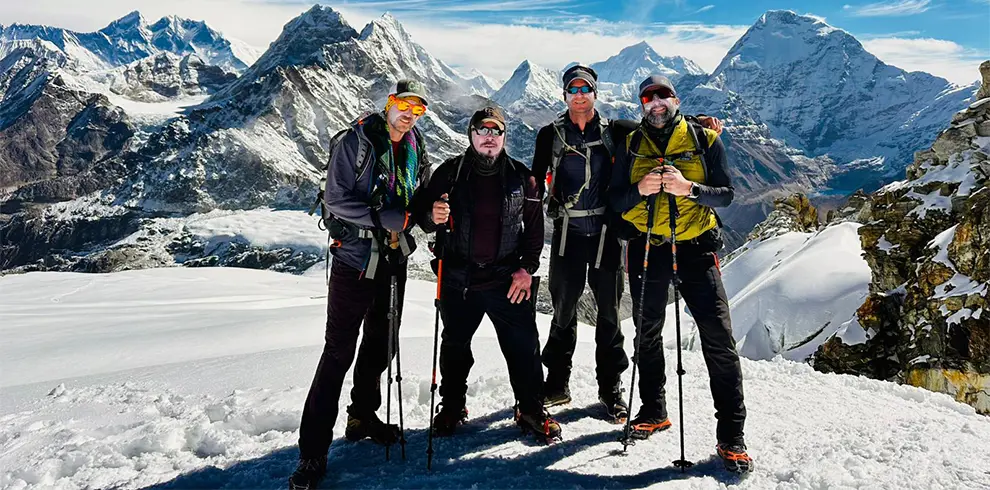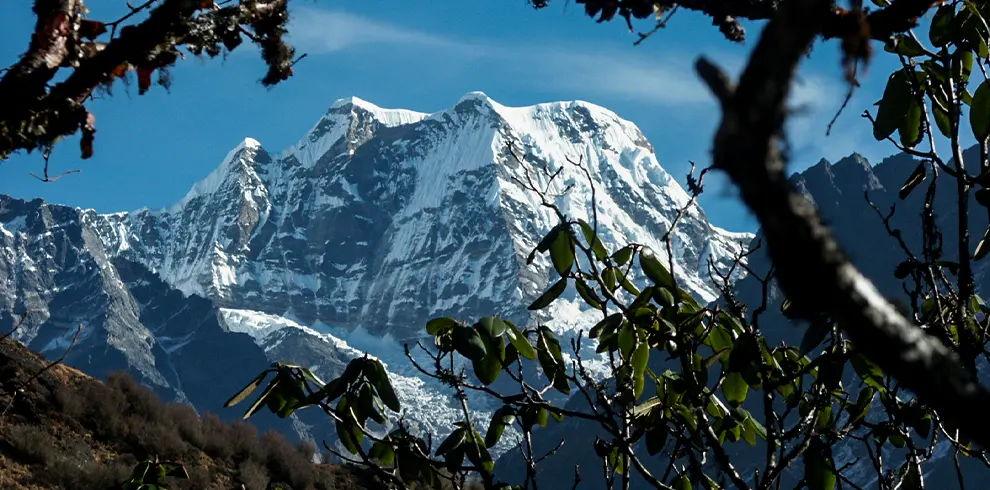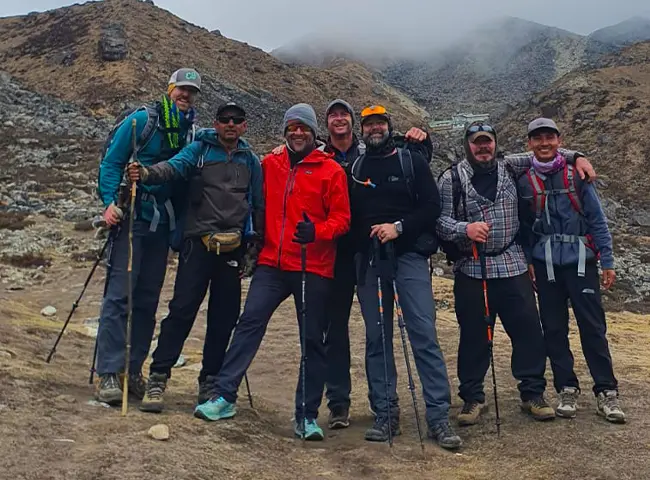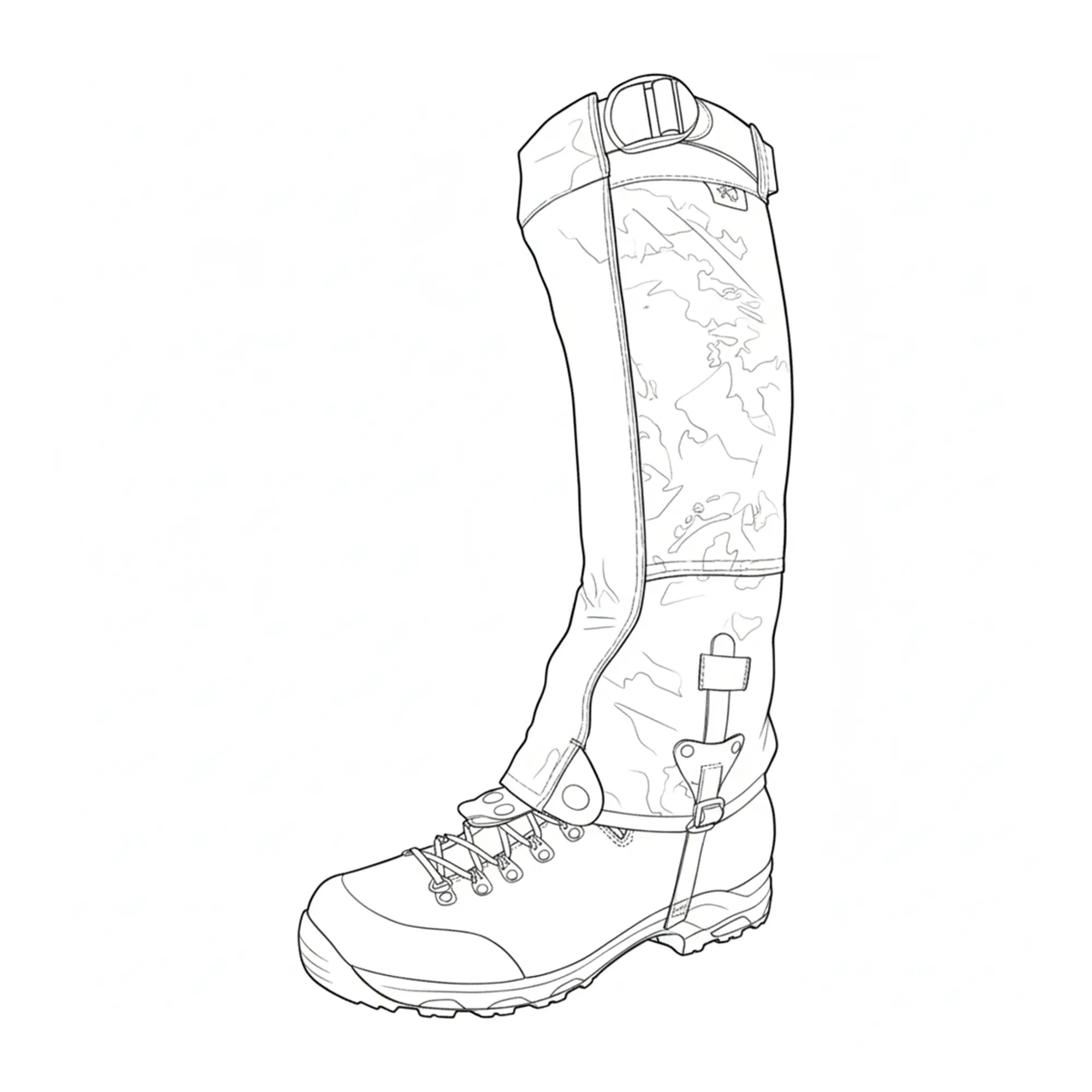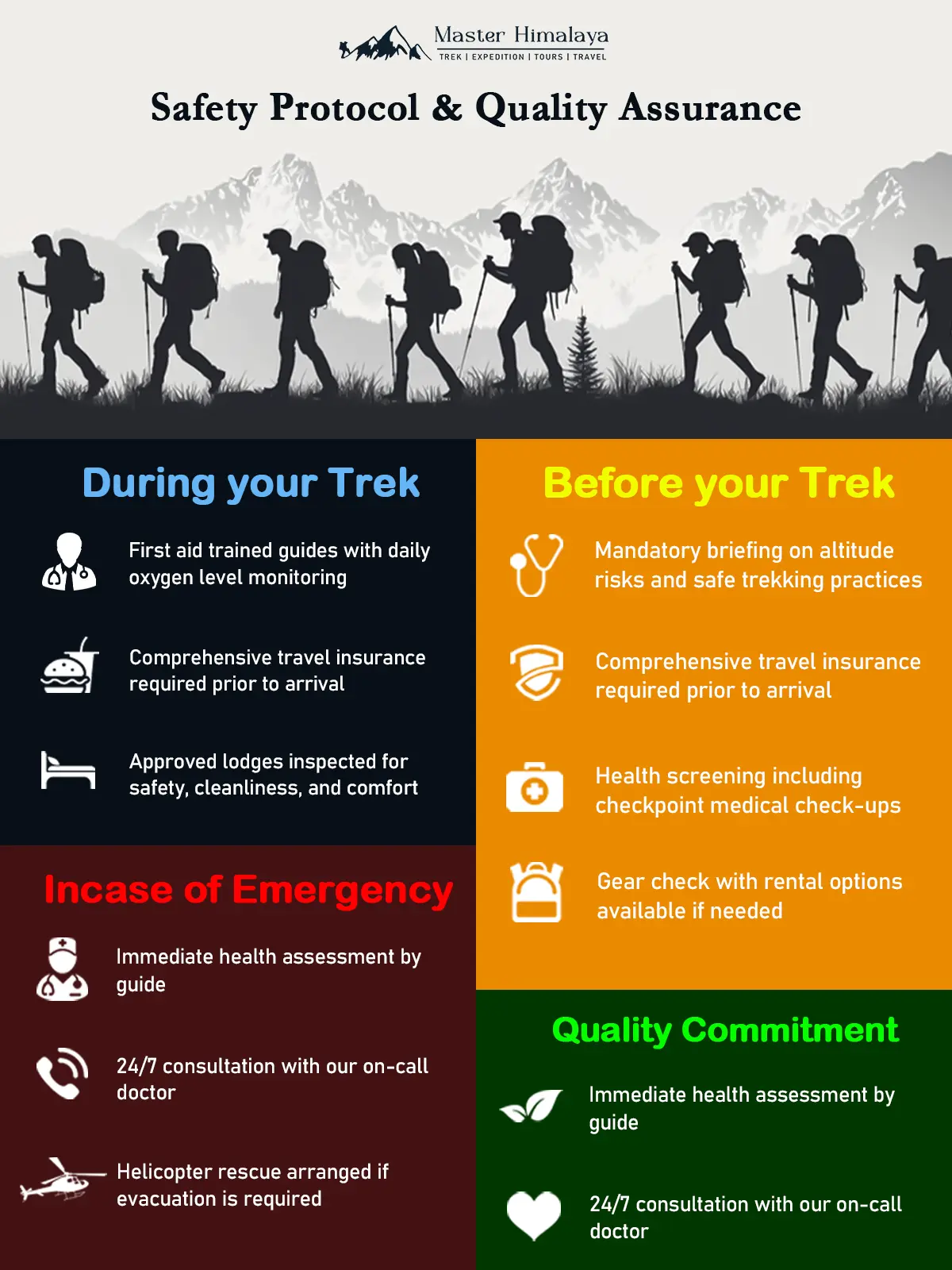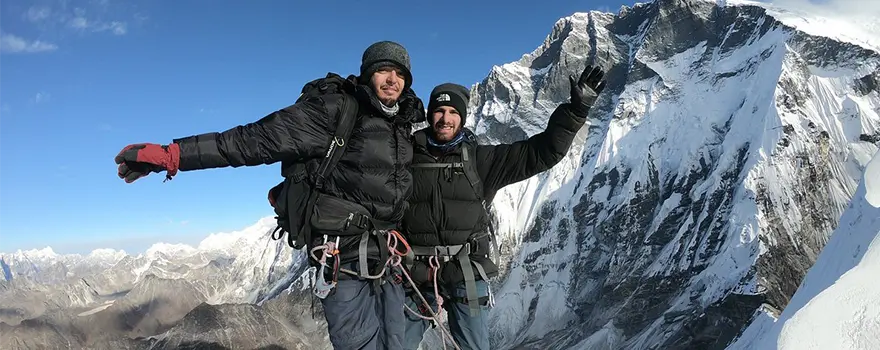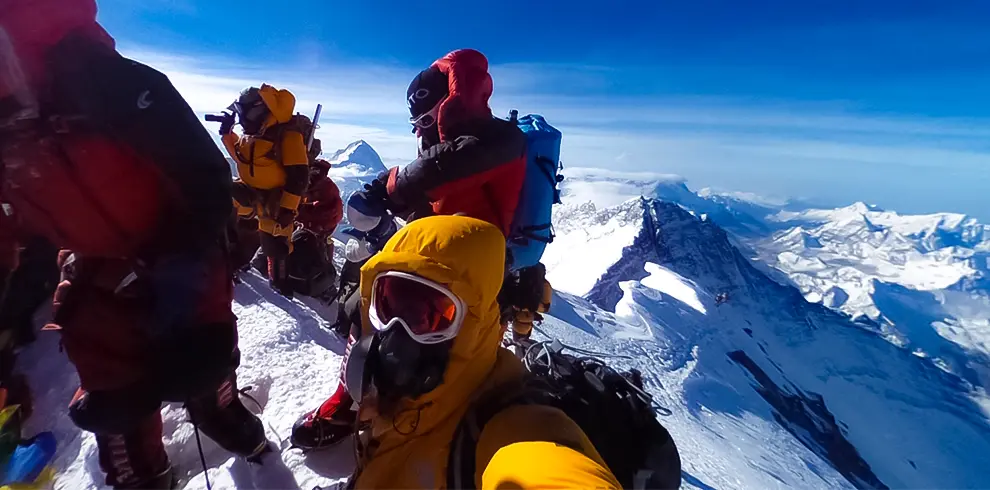Arrive at Kathmandu Airport [1345m/4411ft].
1
2
Fly from Kathmandu to Lukla and trek to Chhutang [3500 m] Duration: 4-5 hours.
We'll start our trek with a 35-minute flight to Lukla, the gateway to Everest Treks. After breakfast and a short rest in Lukla, we'll head towards Chutanga. It's about a 5-hour walk through beautiful villages and pine forests to reach Chutanga, where we'll spend the night.
3
Trek from Chhuthang to Thuli Kharka [4200m] Duration: 7-8 hours.
After enjoying breakfast with stunning views at Chutanga, we begin today's hike. We'll follow a relatively easy path initially, but it will become steep as we climb up to Zatrwa La Pass at 4610m (15124ft). From the top, we'll see breathtaking mountains like Kongde Ri, Numbur Himal, and Karyolung. After spending some time there, we'll descend for about 2 hours to Thuli Kharka. Along the way, we might encounter some yaks as we walk through yak pastures.
4
Trek from Thuli Kharka to Kothe [3500 m] Duration: 6-7 hours.
Today, we'll journey through the upper Hinku valley. As we ascend, you'll notice that the tree line disappears, and we'll find ourselves amidst yak grazing grasslands known as kharkas. Along the way, we'll take breaks for refreshments and enjoy the stunning views of Charpati Himal, Mera Peak Nepal and Thamserku. Our trek will lead us to Kote, passing through Tashing Ongma, Mosom Kharka, and Gondishung along the route.
5
Trek from Kothe to Thangnak [4326m/14189ft] Duration: 4-5 hours.
We'll follow the ridge along the Hinku Khola, with Mera Peak in view. Along the way, we'll pass by the ancient Lungsumgba Gompa, which has carvings of Mera Peak and its approach route on the rocks. After a short distance, we'll reach Thaknak, a summer grazing area with basic cabins and stores.
6
Trek from Thangnak to Khare [5000m/16400ft] Duration: 4-5 hours.
After leaving Thaknak, we trek to Dig Kharka along the side of the Dig Glacier. The scenery of Charpate Himal from here is stunning. From Khare, we'll also get an amazing view of Mera Peak's northern face, which is quite incredible.
7
Acclimatization day at Khare.
Before starting the climb, we'll have a training day to help you get used to the rocky terrain. You'll learn how to use harnesses and climbing gear while going up and down. If this is your first time peak climbing, this training will be really helpful. Our experienced guides will give you important tips to ensure you climb safely. After the training, you can double-check your gear and equipment before heading for the summit.
8
Trek to Mera High Camp from khare [5700m/18696ft] Duration: 3-4 hours.
We hike to Mera La using a rough and steep trail. Along the way, we get stunning views of the three peaks of Mera Peak: Mera South, Mera North, and Mera Central. We're aiming to climb Mera Central, which is the highest peak. After trekking up the Mera Glacier, we reach Mera Peak high camp. The path is moderately sloped, and there's no difficult climbing involved so far.
9
Summit Mera Peak [6461m/21192ft] and descend to Khare Duration: 8-9 hours.
Today is the big day of our expedition. We wake up at 2:00 in the morning. It's quite chilly at first, but as we climb higher on the glaciers and onto a ridge, it starts to warm up. When the sun rises, it paints the large peaks in a beautiful crimson light. As we continue our gentle ascent into the thinning air, the path remains relatively straightforward. As we reach higher, the slope becomes steeper, and we can see the peak again. If our mountaineering leader thinks it's necessary, we might use a fixed rope for the last steep part. We're just a few meters away from the peak. From up here, we get breathtaking views of the mighty Himalayas, including Mt. Everest, Kangchenjunga, Nuptse, Makalu, Cho-Oyu, Lhotse, Baruntse and others. Later, we return to the high camp to relax a bit before heading back down to Khare.
NOTE: Please ensure that you have flexible days built into your travel plans, allowing for at least 1-2 extra days for departure. This precaution is advisable to accommodate potential delays due to bad weather or any unpredictable situations.
10
Trek back from Khare to Kothe Duration: 5-6 hours.
Now it's time to head back to Kote after checking the peak off our bucket list and returning to Khare. We'll follow the same path back to Kothe, which we can reach in about 3 to 4 hours of trekking. Since we'll be going downhill for most of the way, the walk is easier and quicker. As we descend from Khare to Kote, you'll notice the elevation dropping. Most of the trek will take us through lush forests filled with oak, pine, and rhododendron trees.
11
Trek from Kothe to Thuli Kharka Duration: 5-6 hours.
After breakfast, we begin our hike to Thuli Kharka. We'll go up and down, crossing several streams that flow into the Inkhu Khola river. We choose the path on our right and keep going. After we pass a Buddhist shrine called a Chorten, we continue on the steep downhill trail. Then, we climb up to Thuli Kharka, passing another Chorten along the way.
12
Trek from Thuli Kharka to Lukla via Zatrawala Pass Duration 6-7 hours.
Once again, we cross the Zatrwa La pass, which stands at 4,610 meters high, after leaving Thuli Kharka. It takes us about two hours to reach the pass. From there, we can see some of the path we've traveled, and the scenery is stunning, with breathtaking mountains like Numbur Himal, Dudh Kunda, Kongde, and Khumbila in sight. After that, we descend along a trail and walk to Lukla. This is our last night on the trek.
13
Flight back from Lukla to Kathmandu.
We leave early in the morning for Kathmandu. When we arrive, we can take some rest or buy souvenirs in Kathmandu. Today is our chance to explore more of Kathmandu if we want. In the evening, we will have a farewell dinner to celebrate the successful ascent of Mera Peak climbing by the climbers.
14
International departure from Kathmandu.
Our team will drop you off at Tribhuvan International Airport.

